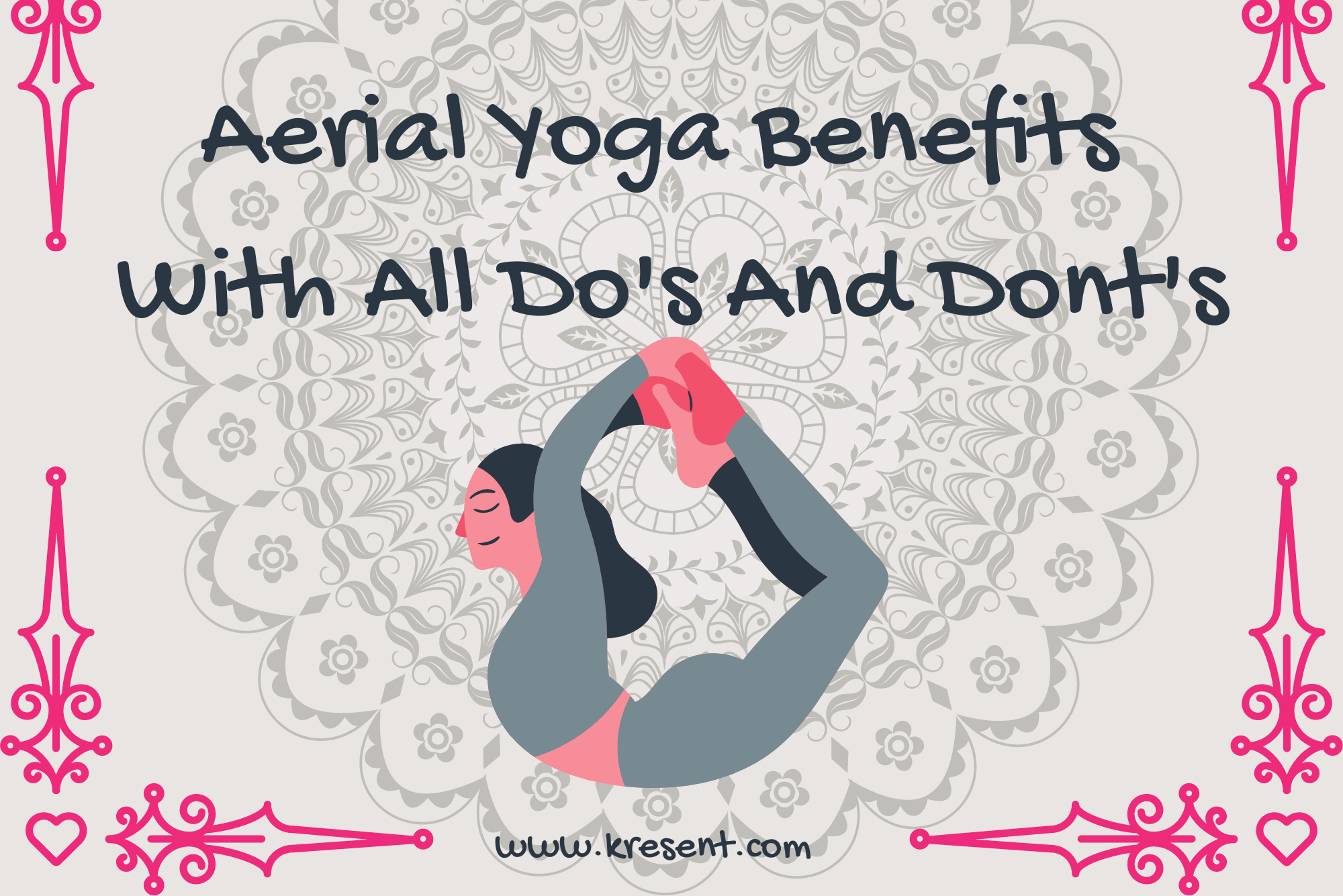Aerial Yoga For Next Level Workout
Jump To:
Aerial yoga is a combination of traditional yoga with Pilates, acrobatics, and dance using a hammock. It’s also called anti-gravity yoga, zero gravity, upside down, and inversion therapy; it’s an art, sport, or practice of performing yoga poses and inversions. This form of yoga has its origins in New York and was created by Christopher Harrison and developed in 2014. Aerial yoga is a combination of traditional yoga with pilates, acrobatics, and dance using a hammock. Let’s get into the aerial yoga benefits and do’s and don’ts to do it properly.

The hammock, which is a prop, acts as a swing encouraging the hips for both forward bends and backbends and can withstand up to 300 kilos on average. Different poses include cross position, leaning back with support, arms outspread, the star inversion, and one leg king pigeon pose.
Aerial Yoga Benefits
The use of the hammock allows individuals to perform postures that they may not perform on the mat.
- Aerial yoga also acts as a great core workout because the core muscles are engaged to balance and stabilize yourself.
- It is an excellent stress buster, improves circulation, boosts digestion, lifts the mood, and improves flexibility with less effort by counteracting gravity.
- It also promotes emotional, psychological, and spiritual health.
- Aerial yoga is particularly beneficial for students who spend a long time sitting or for back pain, as it has a decompressing impact on the spine and relaxes the body.
- It also improves cardiometabolic benefits, improves mental focus and concentration, and challenges the nervous system, mental capacity, and proprioception while improving the pulling strength of the body.
However, most importantly, it is beginner-friendly. There are different types of moves in this type of yoga: chest opener, downward dog, plank with feet in the hammock, silk hammock row, inverted bow pose, and floating savasana.
Do’s And Don’ts
Do’s
- It is essential to properly warm-up before beginning an aerial workout as the muscles are more elastic when they are warm. By warming up, you can also prevent overstretching injuries and incorporate your equipment in the warm-up.
- Opt for a 5-10 minutes light cardio and some dynamic stretching before you touch your swing.
Don’ts
- There are some poses like a floating bow which is not recommended for pregnant women, vertigo patients, or high blood pressure patients.
- Alcohol and aerial equipment do not match or mix. This is because your confidence massively increases after alcohol. Therefore, you might be willing to try things you would not do if you were sober, and the odds probably won’t be in your favor, so it’s better to be careful beforehand.
- It would help if you work through your progress stages and did not rush into more advanced stages as your muscles need first to get conditioned. Thus, it is better to perform a basic pose perfectly than a wobbly advanced pose.
- Do not practice anti-gravity postures on a full stomach, as this may cause digestion issues.
- Don’t apply lotions, moisturizers, perfumes, or makeup while performing this type of yoga, as your yoga silk will quickly become dirty.
Anti-gravity or suspension yoga is an upcoming yoga brand that brings yoga benefits to a new setting through the swing. Practitioners can sink into poses and challenge their flexibility and strength during inversions and transitions. Though this form of yoga may be new, it is quickly popping up across the country and is an amazing addition to those aspects lacking in traditional yoga.
FAQs
What is aerial yoga good for?
Aerial yoga enables you to comfortably maintain every pose. Over time, you can even expect to improve your lung capacity.
Can beginners do aerial yoga?
Some aerial yoga poses require only a bit of support from the hammock for balance purposes, while others require you to place 100% of your bodyweight on the sling itself. A beginner or introductory class can get you well-versed in basic wraps and poses.
Is aerial yoga better than yoga?
Aerial yoga is an amazing addition to the practice of yoga as it helps to decompress the spine, increases core strength and balance and provide the action of pulling, a movement that is lacking in the traditional yoga practice.
Can you lose weight with aerial yoga?
Aerial yoga helps you lose weight by challenging you to engage your muscles to complete the yoga poses while you are in the air. This can help you build toned and lean muscles while you burn body fat.
Do you have to be skinny to do aerial yoga?
Other than that, skin tight clothing is definitely recommended – something that will stay in place when you hang upside-down. Most people prefer to have clothing that covers the backs of their knees and armpits, but this is not required. Tights, yoga pants, or unitards work great.
What is the weight limit for aerial yoga?
Most apparatus and equipment used for aerial yoga is generally tested with a maximum weight of 330lbs (150kg). If the equipment is used correctly then aerial yoga apparatus, rigging and hammocks/swings are safe to use at home or in a commercial setting.
Does aerial yoga build muscles?
Aerial yoga not only improves your balance but also builds muscle strength as you hold yourself upright in the hammock using your arms and core. Aerial yoga targets all your muscles.
